What have members of Sheffield Hackspace been up to this two-months?
Let’s find out what else some members have been up to!
Visiting Nottinghack
A few of us from the Hackspace drove to Nottingham last month, in part to watch Hackers at the Savoy Cinema in Nottingham. It was a 30th anniversary screening and we all wanted to watch it. We took the opportunity to visit Nottingham Hackspace, and met up with a few members there.
It’s a lot bigger than our space, but shares a lot of ethos. I had fun looking around, especially at all the transport signs ;].
No pictures, though, sorry!
Adam
3D printed coat hooks

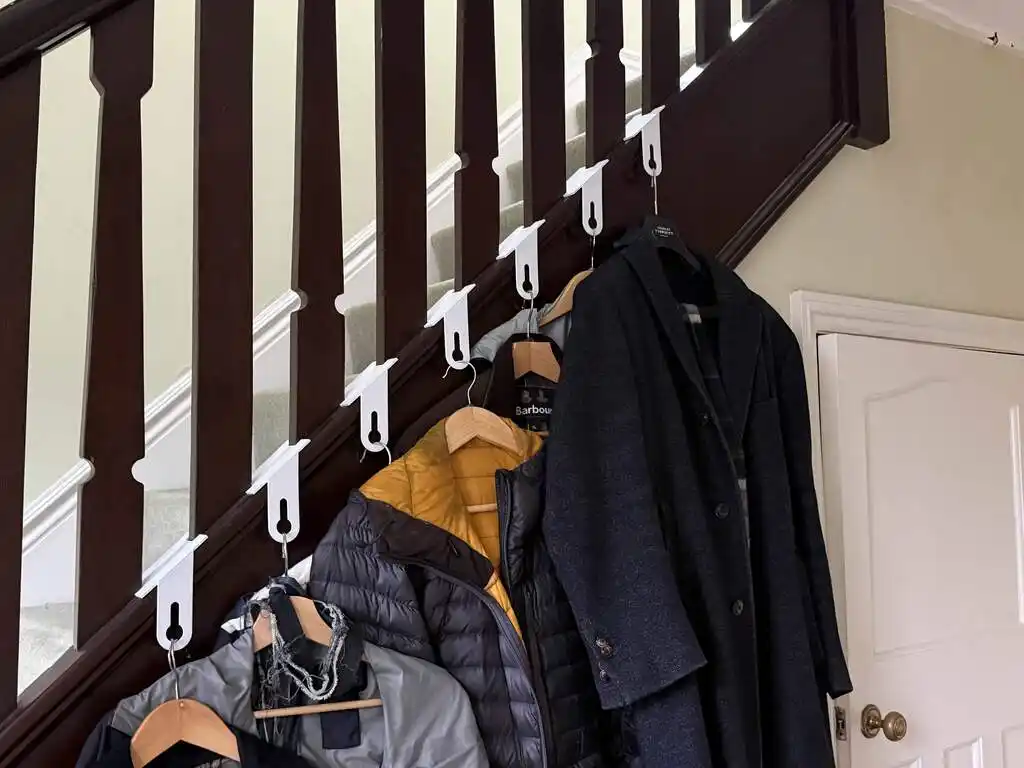
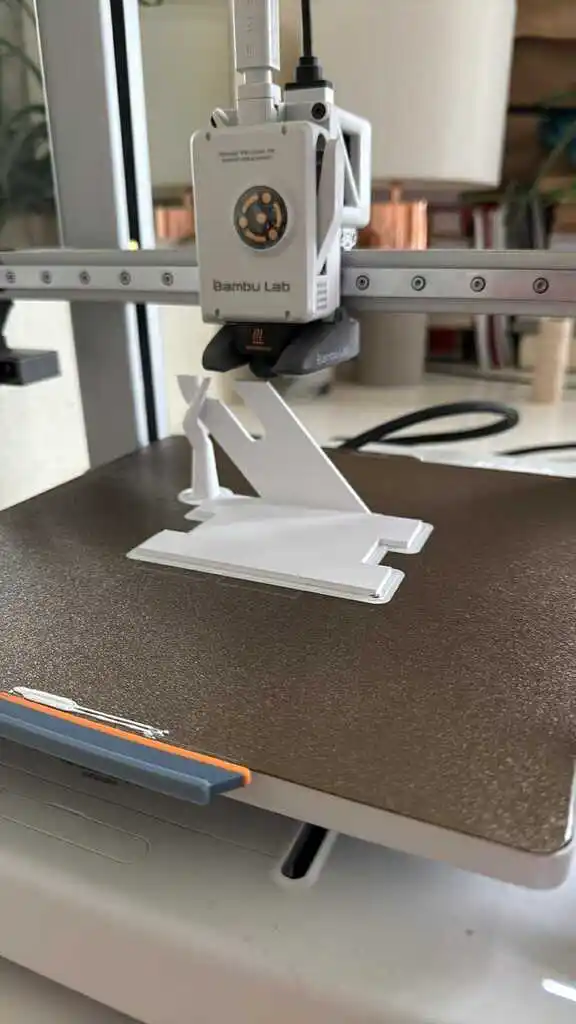
Making a historic belt with the CNC mill
Designed in OpenSCAD, post processed using FreeCAD (with some pain), worked flawlessly until I miscalculated the clearance 🤦♂️
I successfully milled an element without breaking the drill bit.
Brass milled into a mock late XIV century decorative belt.
The manufacture:

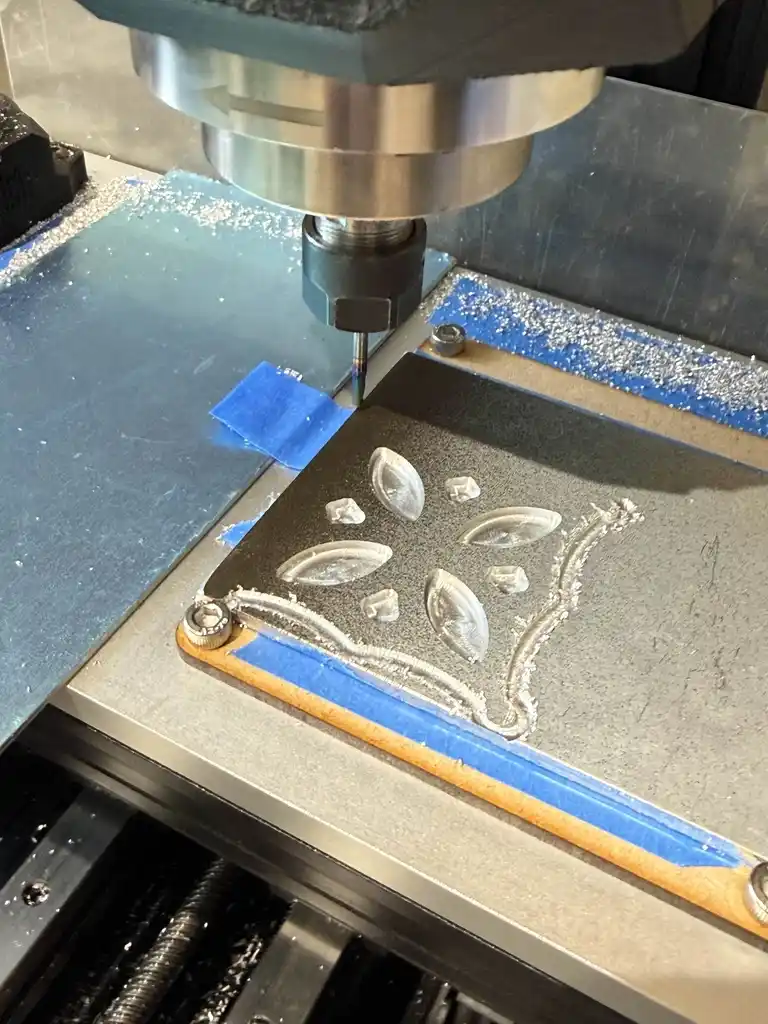
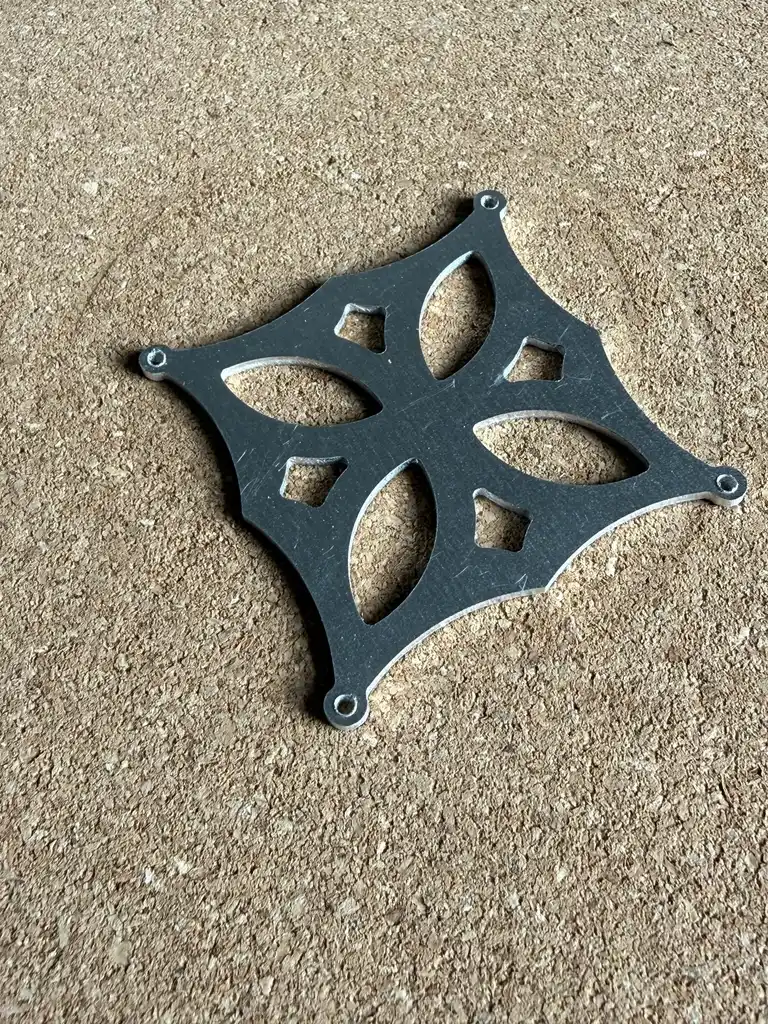


The final result:
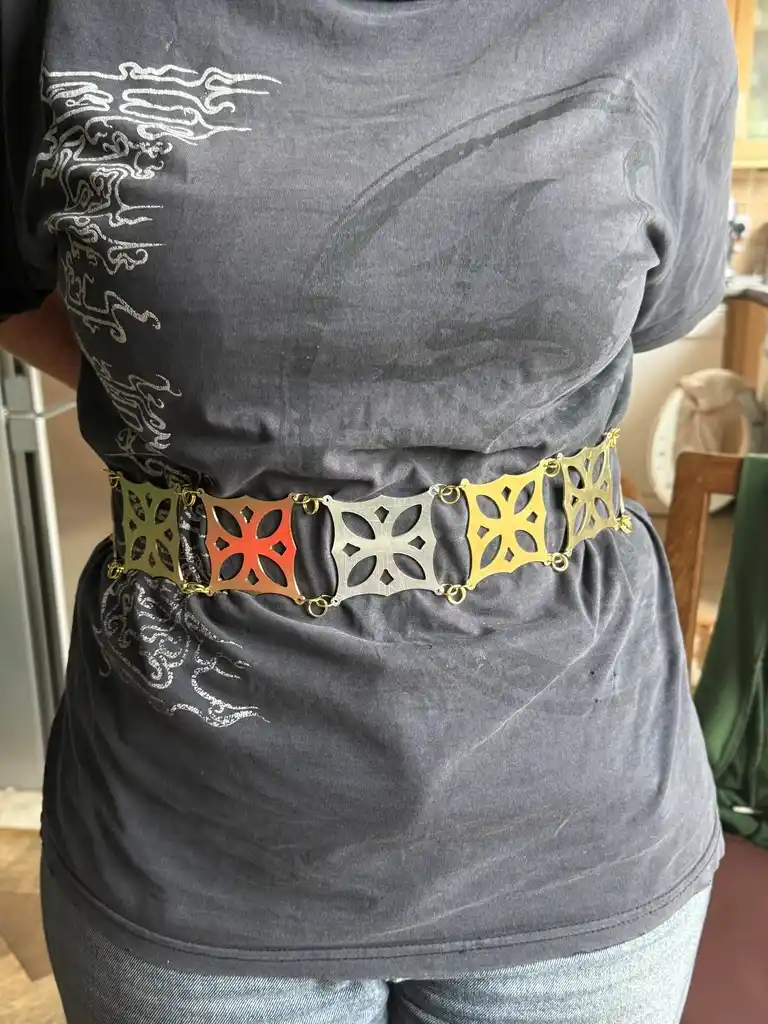

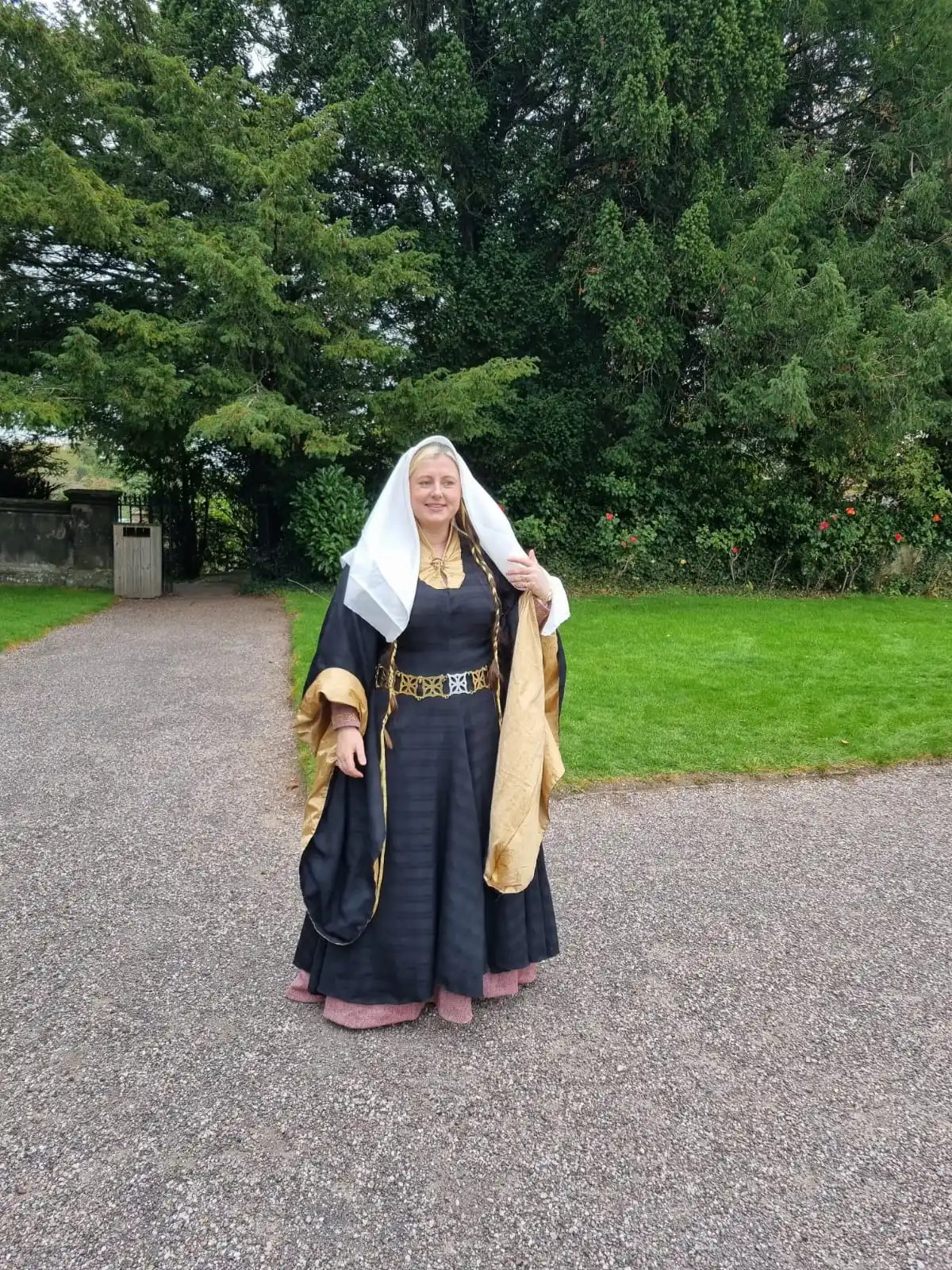
Environment monitoring at home
I got myself some SEEED Xiao ESP32C6 and a Xiao Logger Hat and a 3.7V 500mAh lipo battery and I hope that I would be able to make this into a room state logger (temperature + humidity).
Looks like the ESP works and aside from some tiny weird sparks it is reliably 4 degrees hotter (offset subtracted in HA).



alifeee
Fixing my bike mudguard
Something got stuck in my mudguard rods when I was cycling and completely ripped off the bottom part. As a “temporary fix” (that may last years), I widened an existing hole and bolted the fixing to that instead.


Trying out ConnectedLittleBoxes
ConnectedLittleBoxes (GitHub) is a project designed to make it easier for people to make arbitrary IOT devices. With an ESP8266, some buttons, some LEDs, and some JSON “code”, you can make one box turn on the lights on another across the country, so long as both are connected to WiFi.
I’ve been trying it out with two ESPs and you can see in the video that I press the button on the left one, and the right one reports this to the computer. I haven’t got any better output devices yet (like LEDs), but I will order some. I might 3D print some cases for them.
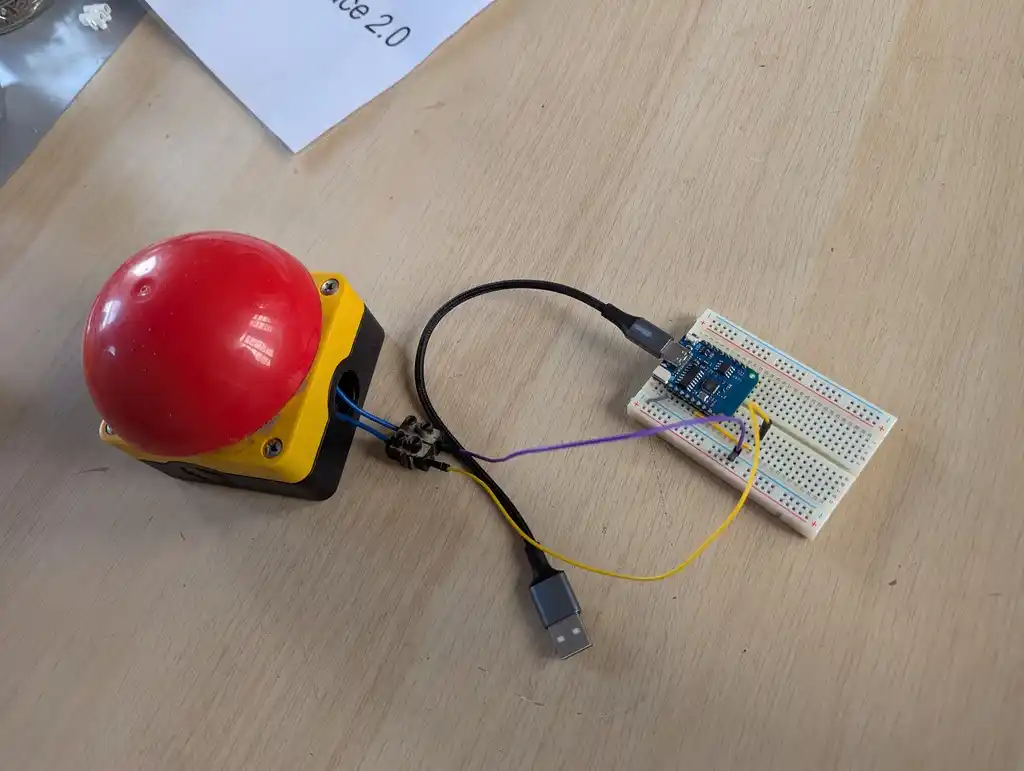

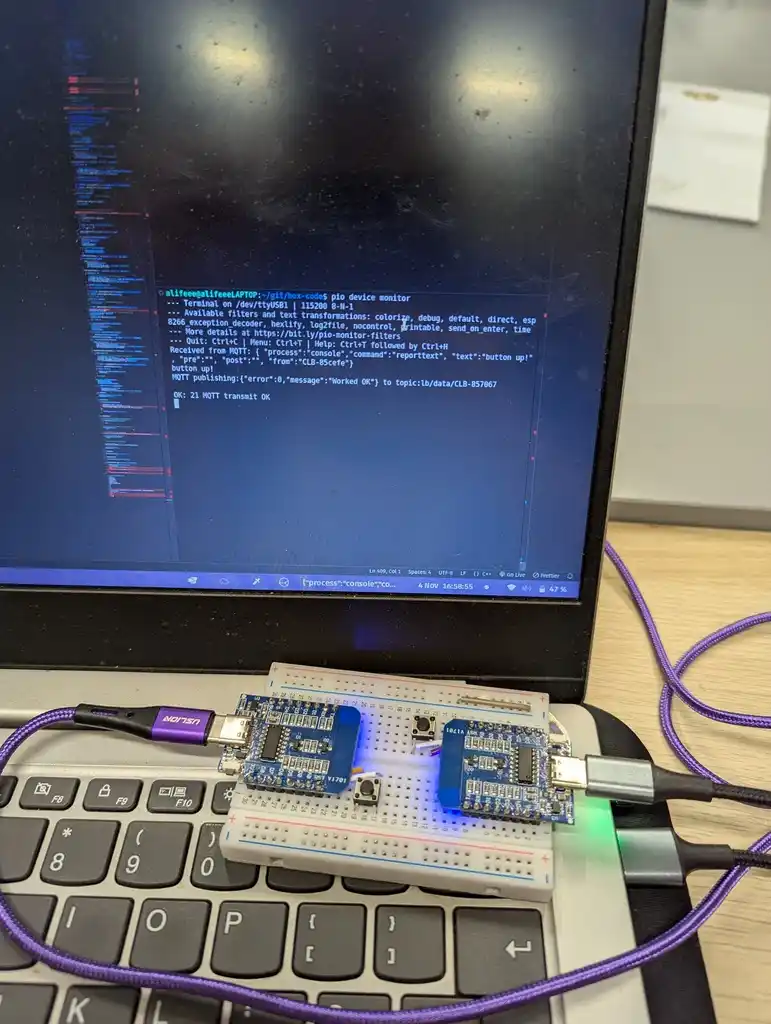
Environment monitoring of the Hackspace
I set up a system (source) on the Hackspace MQTT network which listens to messages like…
SHHNoT/environment/room<X>/sensor<Y>/<measurement> <value>`…or with ‘real’ data…
SHHNoT/environment/room-d/sensor_ESP8266-SCD40-1/temperature 23.414…and saves that data to an instance of InfluxDB2 (time-series database) running in the space. That data can be queried and displayed nicely by Grafana (data visualisation software), which is also running in the space.
Finally, I use Info-Beamer (display management software) to occasionally show this Grafana dashboard on the monitor in the main room of the Hackspace, so everyone can see the current and previous environment data.
In theory, anyone can add a sensor by simply making a device by pushing messages to MQTT with the right format. A couple of other people have done this already — I’ve also published the code I am using to flash ESP devices with various sensors.
Here are some sensors (moiture, CO2/temperature/humidity)

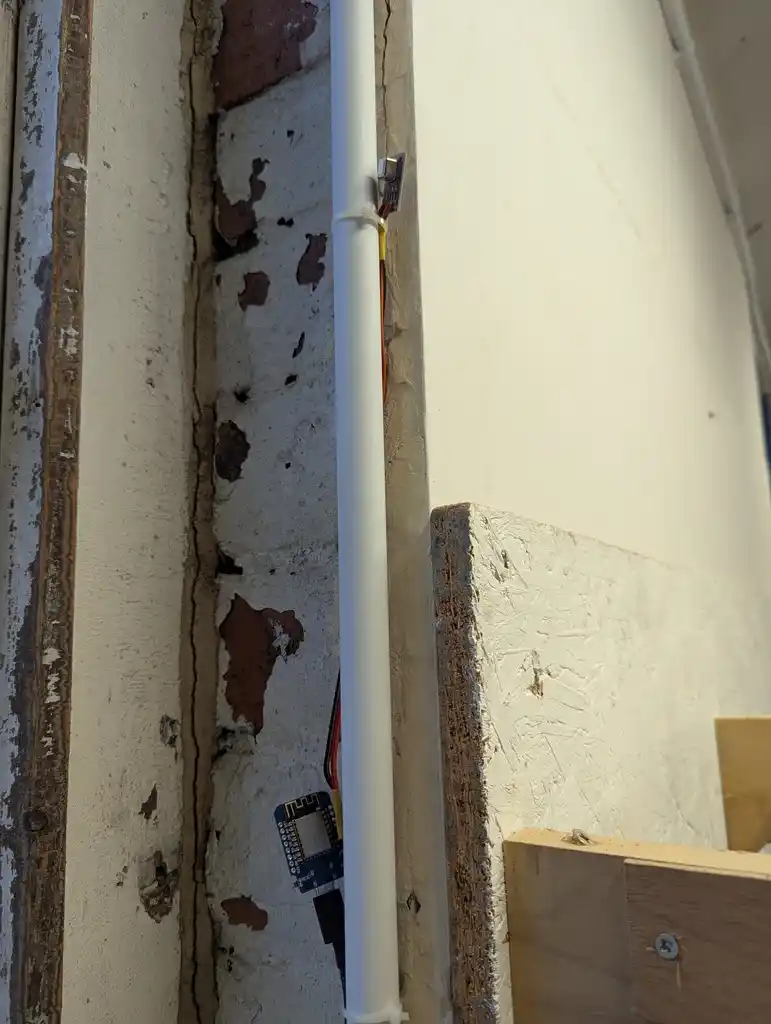

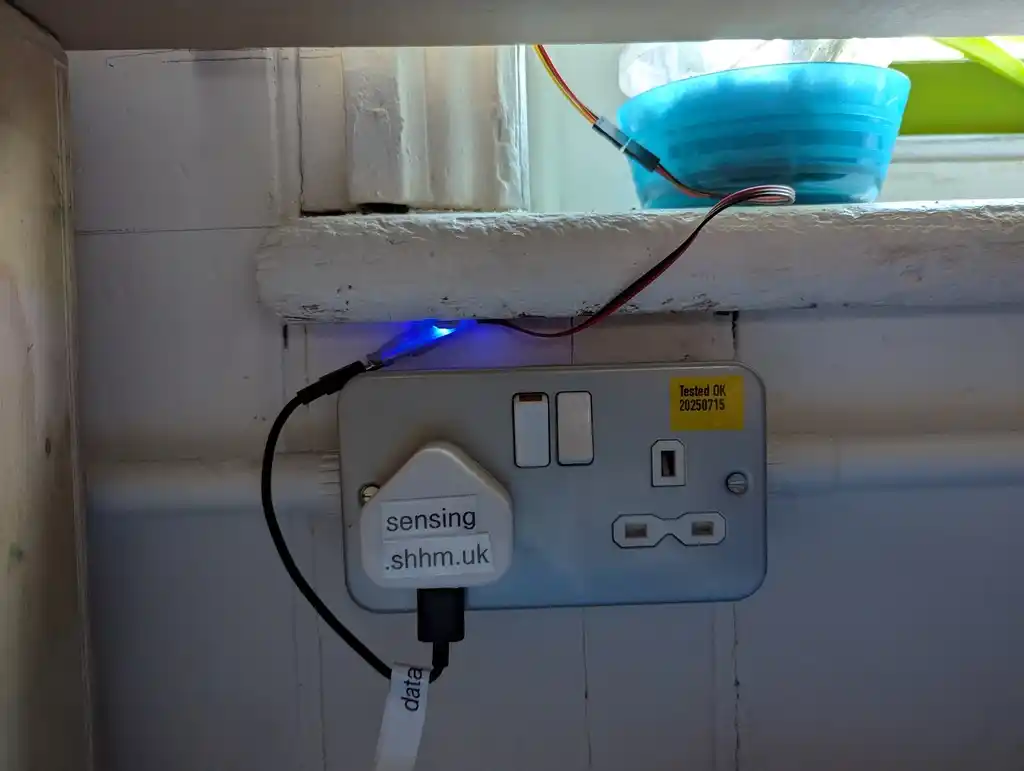
…and what it looks like on the monitor in the common room
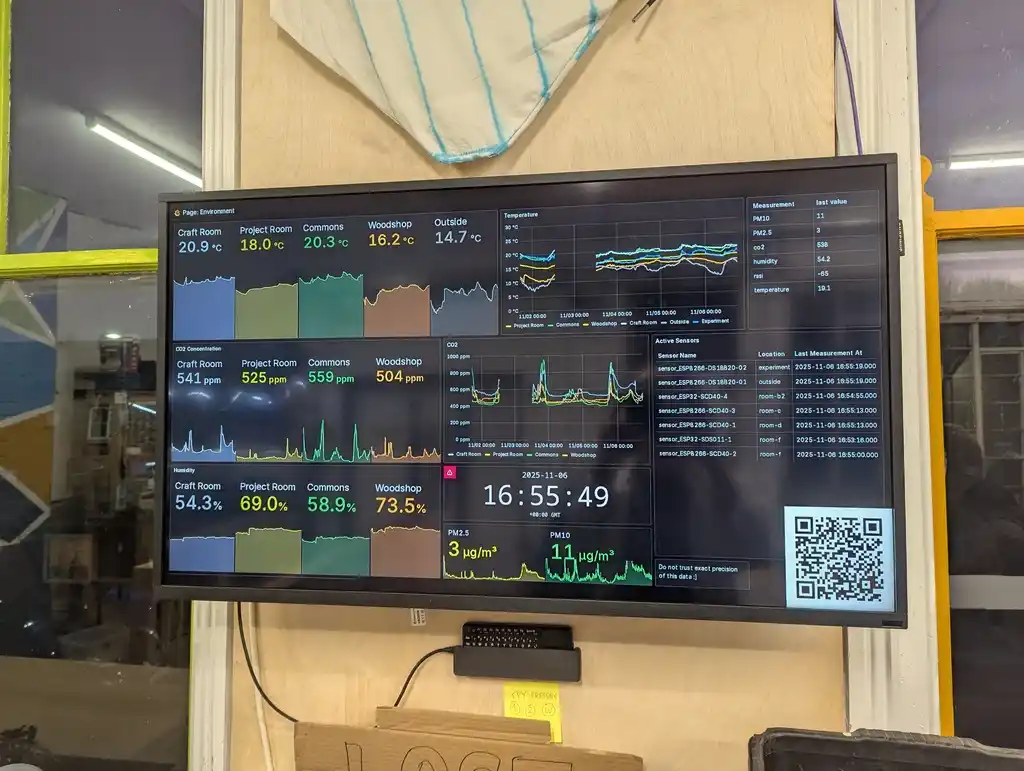
Assembling a mini macro-pad
Last year Pimoroni gave us a box of goodies. This month, I found a Keybow Mini and assembled it. It was pretty fun to make, and I made some custom firmware to allow more than 3 keys of input from the 3-key keyboard.
I… can’t say I’ve used it much since making it, but it was still fun.
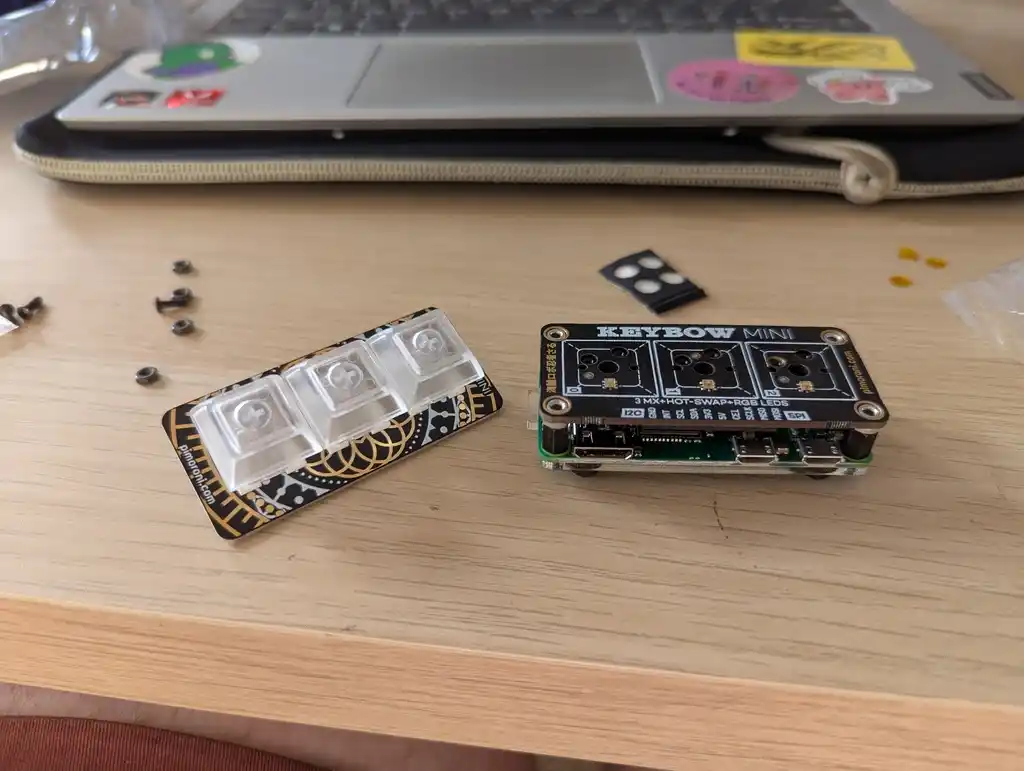
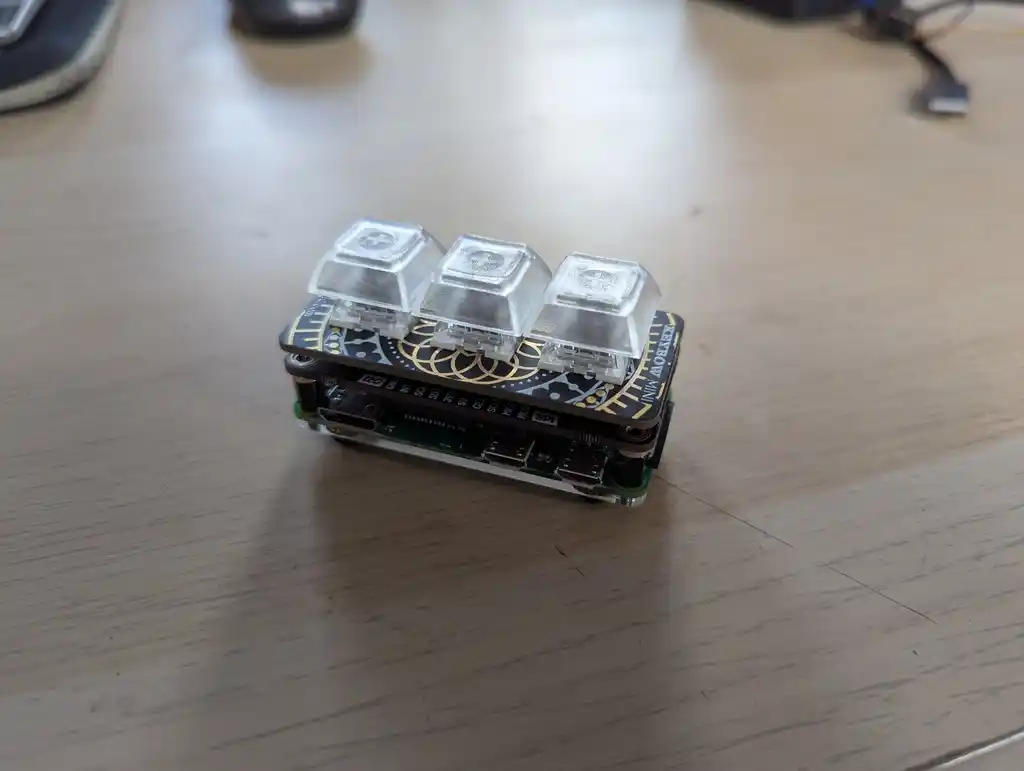
Connecting old transport signs to the Internet
For a few years I’ve enjoyed hacking into old transport signs. This month, I’ve been trying to make some better hardware to connect to them than my flimsy breadboard/dupont monstrosities
The messy connections I’ve been making so far

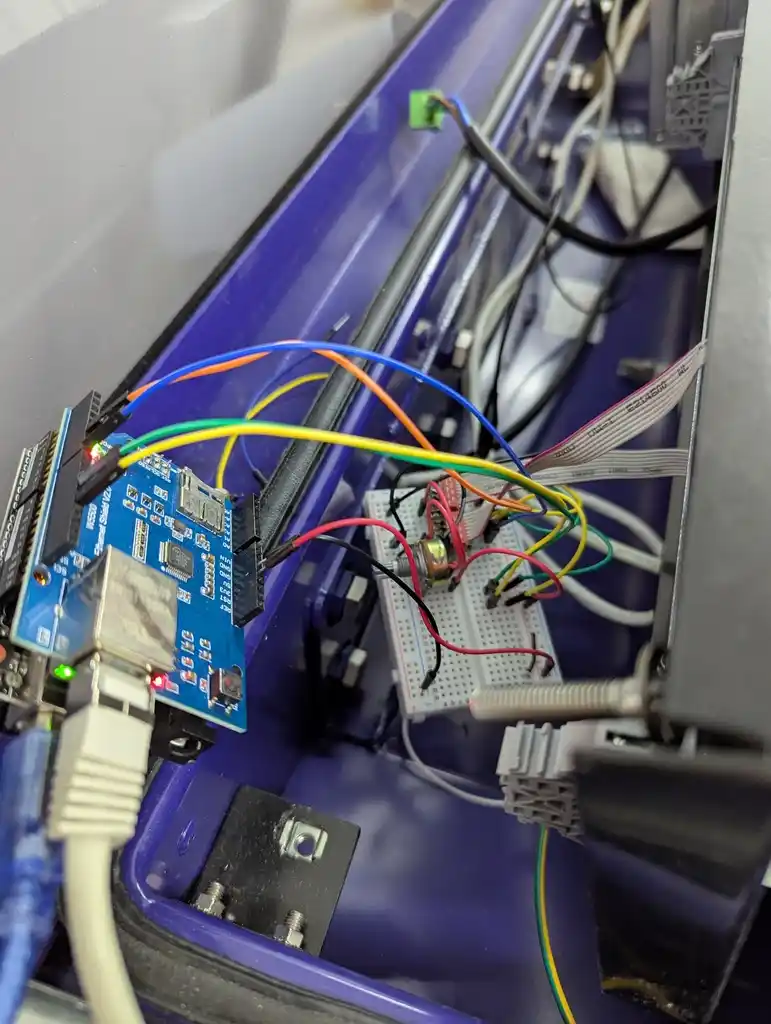
One of the transport signs I’ve been messing with


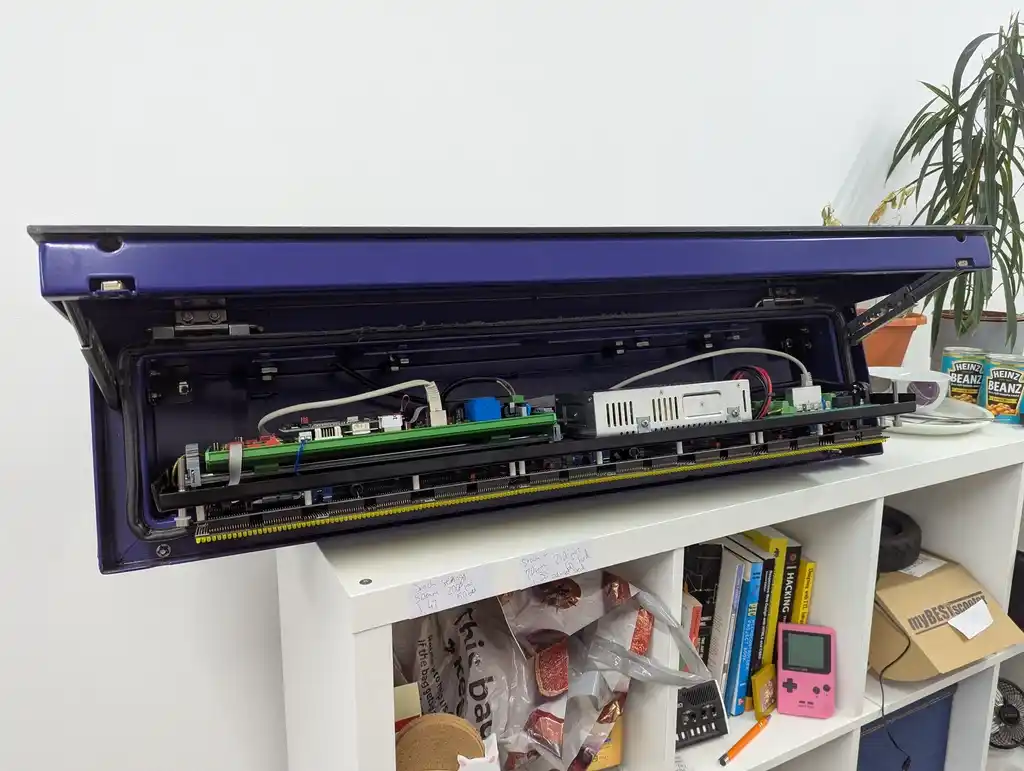
Some of the old internal electronics of the sign that I have repurposed



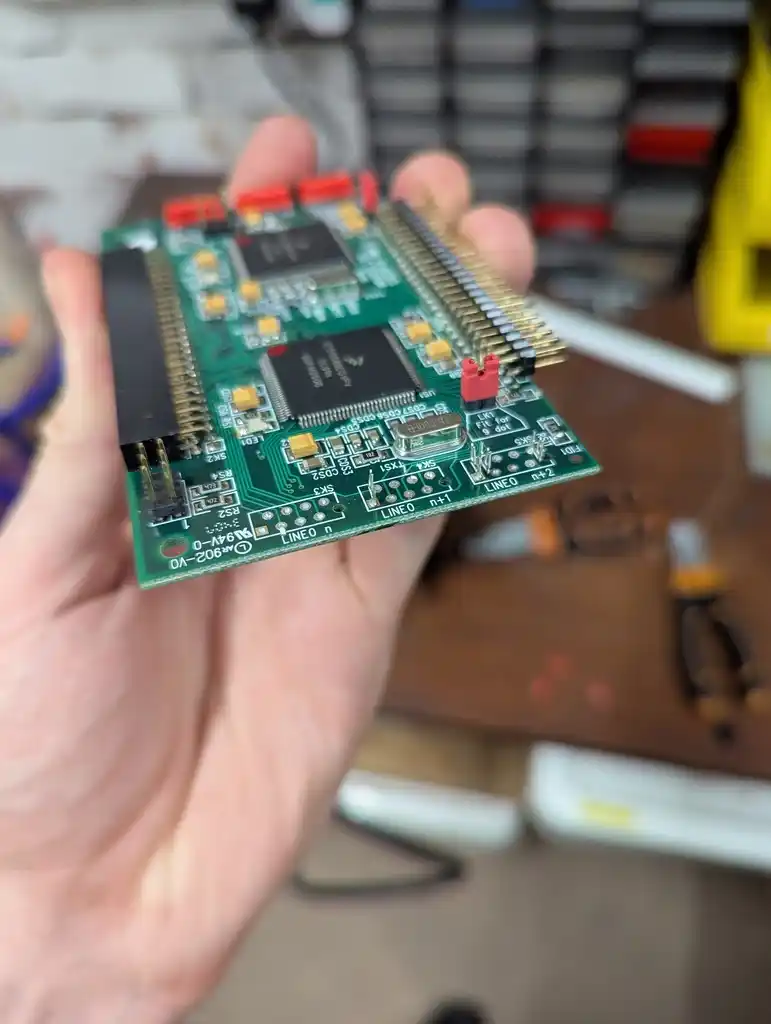

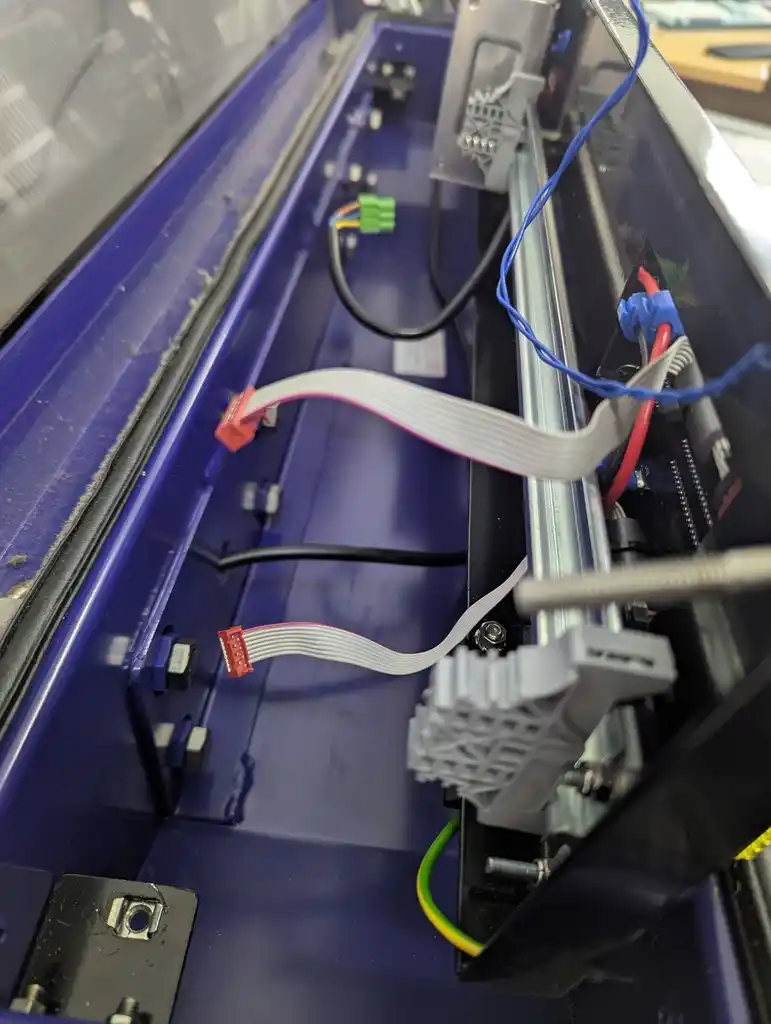
The sign connected to Ethernet, letting me send messages from a nearby computer
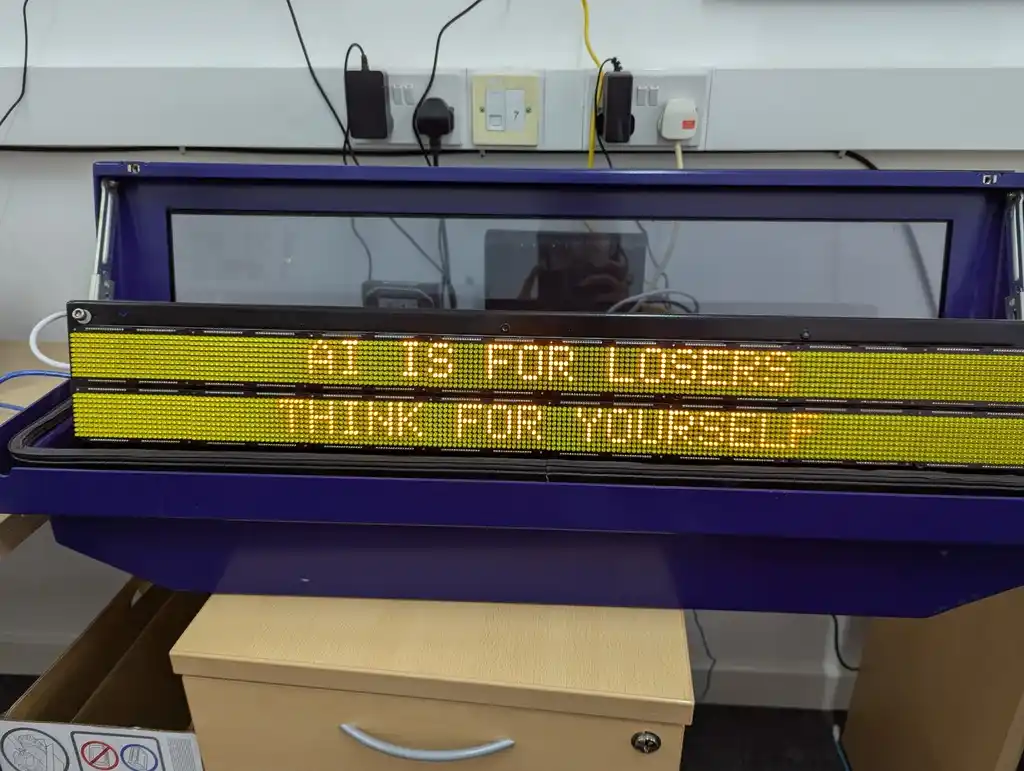
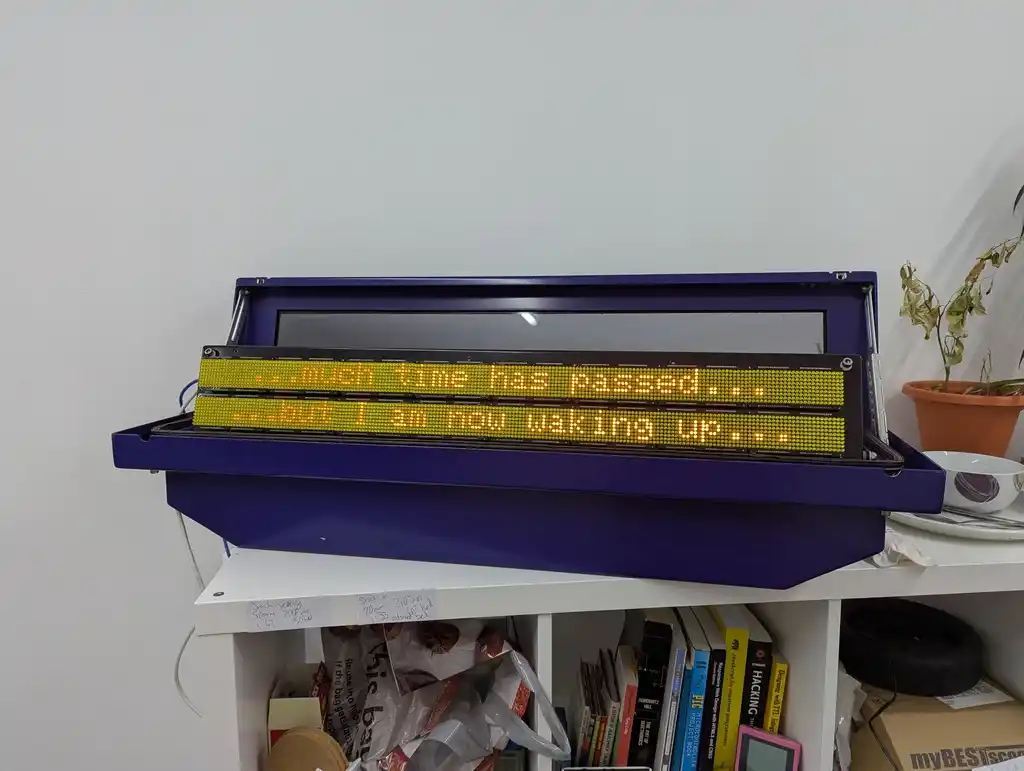
The “better” connector that I’ve been trying to make. I think the soldering is OK.

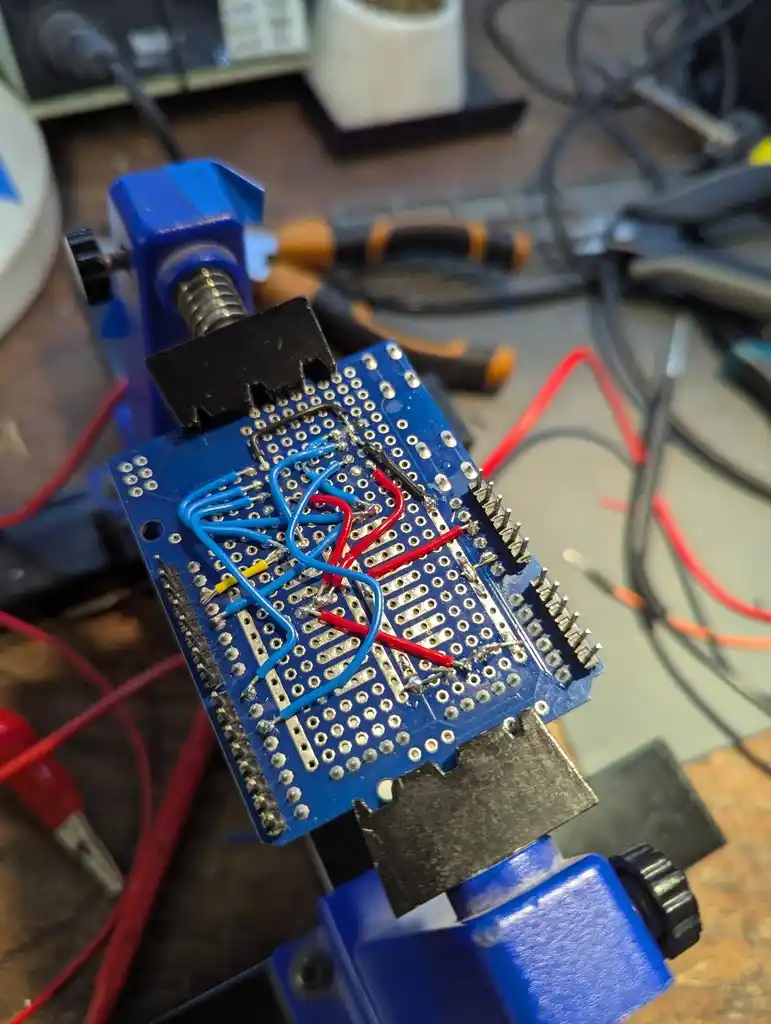
Creating a space-state visualiser
More things for the monitor! With the help of Nik’s beautiful visuals, I made a system which runs a Python server to:
- listen to MQTT messages and update an internal state object
- send this state to anyone who requests it via HTTP (plain or over websockets)
- send a webpage which will live-update with the latest state
Watch it in action in the video below, where someone opens the door in the common room and it shows such on the monitor.
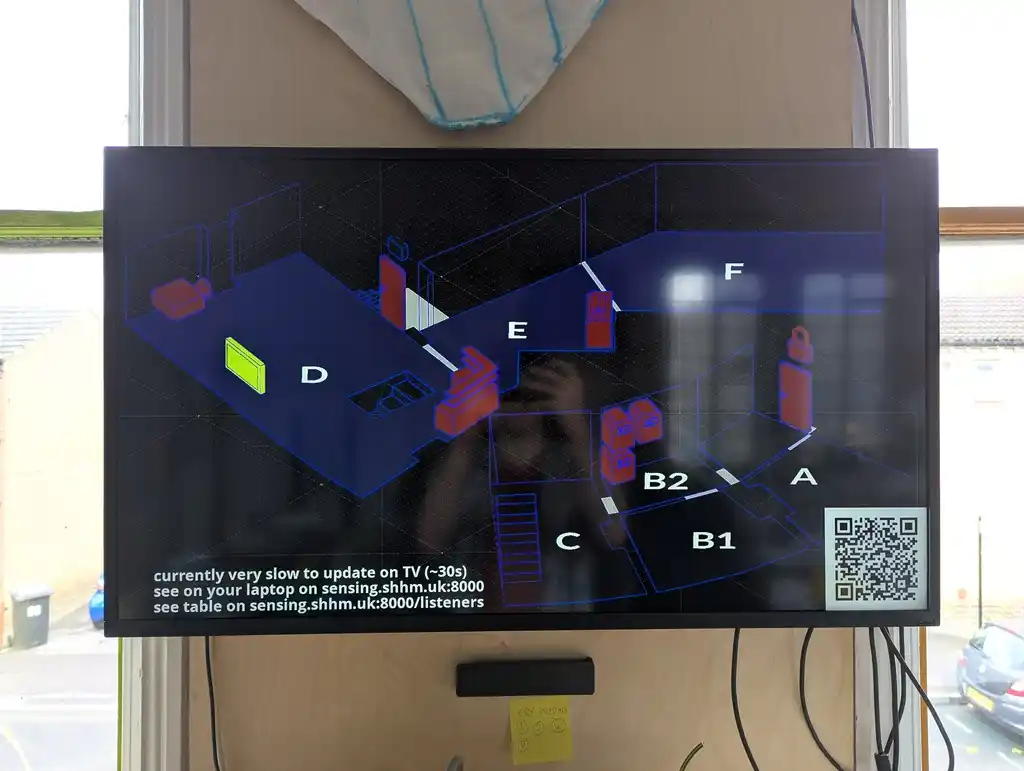

Creating a virtual tour of the Hackspace
Downpour is a really neat tool for making easy-to-understand, easy-to-make, interactive games. I’ve used it for all sorts of fun little things. This month I made a little prototype tour of Sheffield Hackspace with it. It was fun running around and snapping pics. It was less fun drawing the same blue/purple box for the 30th time.
You can try it out right here:
Contributing to Movary, a movie tracking website
For a while I was trying to find something like Letterboxd which would let me log movies I wanted to watch, or had watched, but without being locked in to one company or system (Letterboxd uses data from TMDB but doesn’t provide the cross-reference TMDB movie ID when you export your data, making it much less usable, horrible!)
I found out about Movary, which is a self-hosted movie tracker. I wanted to find something with ActivityPub support, but I could only find NeoDB, which was a bit too powerful for my needs. I set up my own instance of Movary a couple months ago, and have been adding a few small features and fixes which I contribute back to the project. I think it’s neat :]
Kieron
Decorating Gaslands cars
Made one of my first Gaslands cars out of the Hot Wheels cars I cracked open a week or so ago - the pillar drill was perfect for boring out those rivets, so I can remove the “glass”, repaint the whole car and interior too. Oh, and of course, I had to add some spiky wheels and maniacal freaks who are fighting for dear life in the American wastelands!

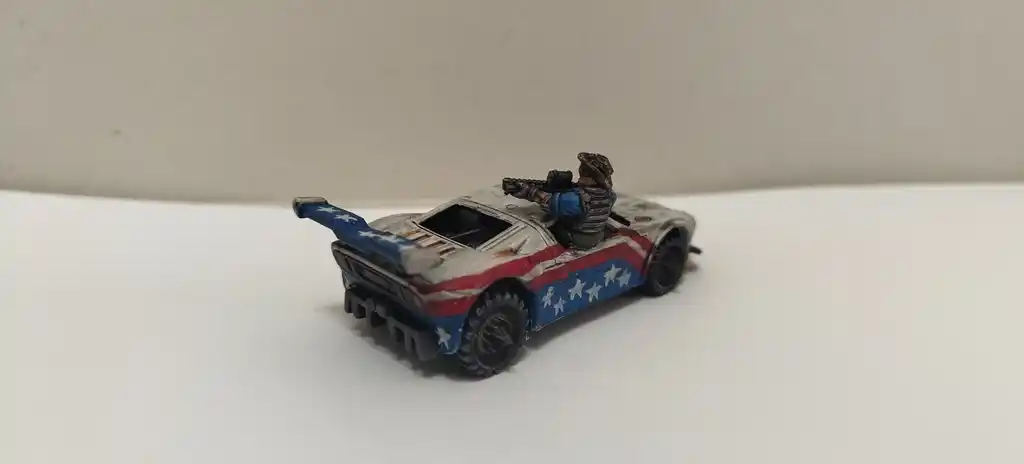
Louise
Rocketry
Several of us have been getting into model rocketry, we attended a Midland Rocketry Club launch. I have been working on a few rocket builds including a pyramid which i cut on the laser cutter, epoxied together and painted with a metallic gloss paint which gives a great effect in the sun.
Nathen
Commodore 64 Re-PCB
This is my Commodore 64 Re-PCB Project. After dusting off my childhood Commodore64, I discovered there were a few issues with it. After swapping out the problematic memory, I started tracking down a logic issue. Unfortunately, the revision of the Commodore 64 motherboard I had was prone to lifting tracks and solder flowing under the solder mask. Fortunately, the Board Folk created a reverse-engineered C64 PCB with those issues fixed and built to modern standards. I rebuilt the Commodore onto the latest revision of the “Long board” I fitted all new passives, switches, cartridge slot and controller ports, and fitted all of the custom chips and logic from my original C64. Turns out it wasn’t a logic issue at all, but a fault with one of the components on the old board as the problem didn’t move across to the new board.
So although it’s a new mainboard, the heart is still the same as my 1986 original. It’s been a lot of fun, and a lot of solder.

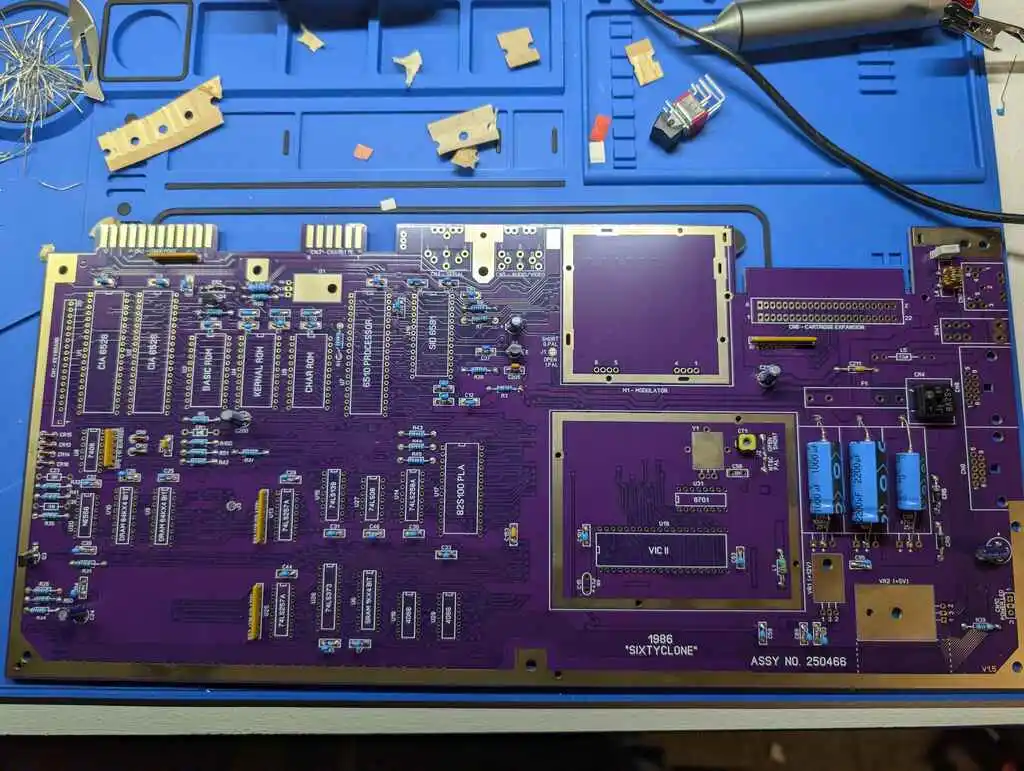
Nik
Nik and others spent a short while using a digital microscope to look at the gashes made by laser cutting wood.

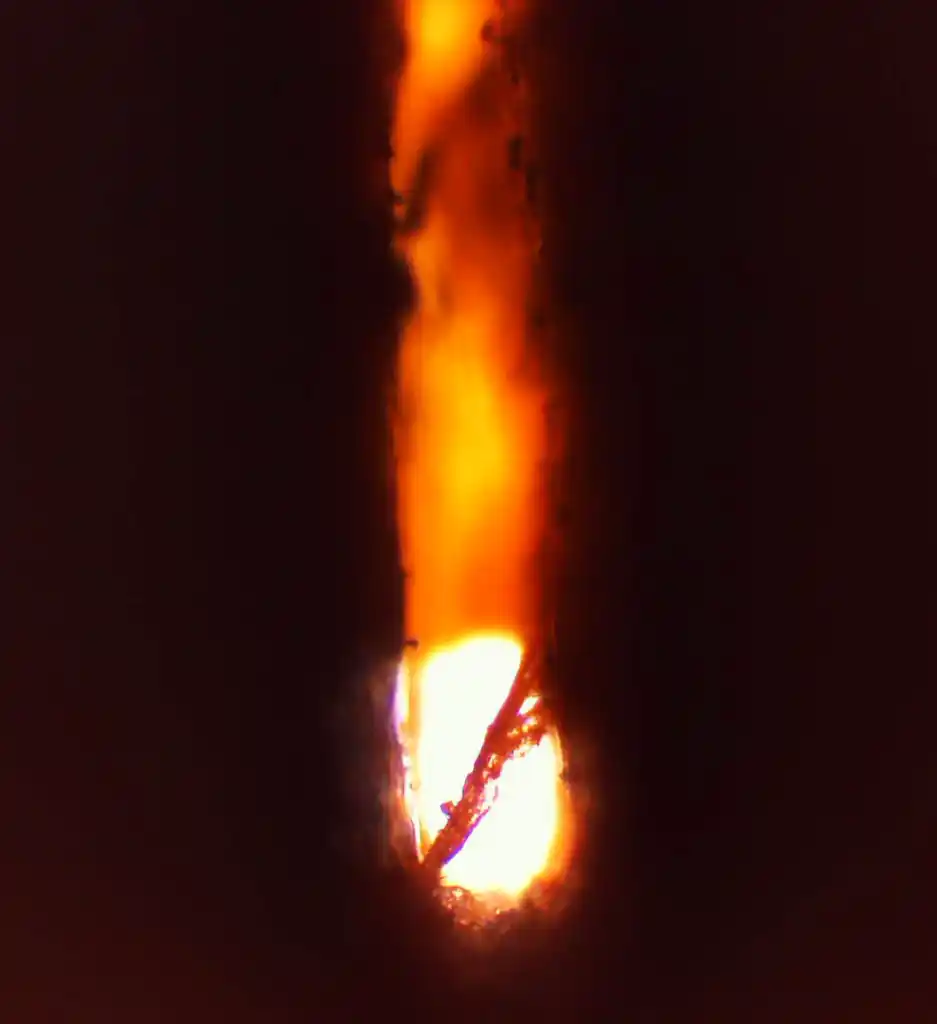
That’s all
That’s all for this month! Remember, you can:
- come and visit the space! https://www.sheffieldhackspace.org.uk/calendar/
- learn more about on joining on the wiki: https://wiki.sheffieldhackspace.org.uk/
- add your own items to next month’s month update: https://github.com/sheffieldhackspace/month-updates
Until next time :)

